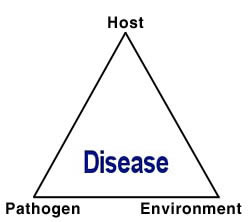 Sudden Oak Death - April 21, 2004 Jeff Schalau, County Director, Agent, Agriculture & Natural Resources Arizona Cooperative Extension, Yavapai County Since 1995, large numbers of tanoaks, coast live oaks, and black oaks have been dying in California's coastal counties. The epidemic, referred to as Sudden Oak Death, was first seen on tanoak in Mill Valley (Marin County) in 1995. Since then, it has been confirmed in twelve of California's central coastal counties as well as in Curry County, Oregon. In June 2000, University of California researchers isolated a previously unknown species of Phytophthora ("Phy-TOFF-thoruh"), a fungus-like organism, from dying oak trees. Since that time, researchers have confirmed that this new species of Phytophthora was also isolated in 1993 from ornamental rhododendrons in Germany and The Netherlands. This new species has since been officially named: Phytophthora ramorum. The name refers to the pathogen's tendency to cause infection on branches of itís hosts. Relatives of this plant disease also caused the Irish potato famine. Phytophthora ramorum may be spread through infected wood, soil and rainwater. The leaves of foliar hosts such as bays, madrones (a relative of manzanita), and rhododendrons contain large amounts of spores which may be dispersed through the air under moist and windy conditions. However, probably the most important way in which humans spread the pathogen around is by moving infected plants and plant parts. Other known hosts for Phytophthora ramorum are bigleaf maple, Douglas-fir, coast redwood, salmonberry, poison oak, Pittosporum, Camellia, Pieris, Viburnum, and a few others. The host list is growing and this disease will likely continue to have serious impacts on the nursery industry and in landscapes. In March 2004, the USDA detected the presence of the disease in a large southern California wholesale nursery that ship plants nationwide. Since that time, the disease has been found in nursery stock originating from that California nursery in several states including: Florida, Oregon, Washington, Georgia, Louisiana, and Virginia. Phytophthora ramorum has not yet been confirmed in Arizona. Many states have imposed quarantines on nursery stock originating from California, Oregon, and Washington. Much is now known about Phytophthora ramorum, but new information is steadily becoming available. Unless you are a plant pathologist, you may not know where to find the most current information. Web sites with current information include: USDA APHIS at www.aphis.usda.gov, Marin County Cooperative Extension at cemarin.ucdavis.edu, and the California Oak Mortality Task Force at www.suddenoakdeath.org. These sites have photos, maps, and current press releases. Plant diseases caused by living organisms need three factors for successful infection: the presence of the disease pathogen, a suitable host plant, and environmental conditions favorable for the disease. Remove any one of these factors and the plant disease will not occur. This relationship is usually graphically represented by a triangle. Mary Olson, University of Arizona Cooperative Extension Plant Pathologist, felt that environmental conditions in Arizona were probably not suitable in most areas for Phytophthora ramorum. Some exceptions could be higher elevation areas that receive greater amounts of precipitation and where cooler temperatures would favor the disease. Nurseries and irrigated landscapes will also provide suitable environments. Time will tell. In the meantime, we should all be on the lookout for suspicious symptoms such as lesions, dieback, stem cankers, and other signs of decline. The University of Arizona Cooperative Extension has publications and information on gardening and pest control. If you have other gardening questions, call the Master Gardener line in the Cottonwood office at 646-9113 ext. 14 or E-mail us at mgardener@verdeonline.com and be sure to include your address and phone number. Find past Backyard Gardener columns or submit column ideas at the Backyard Gardener web site: http://cals.arizona.edu/yavapai/anr/hort/byg/. |